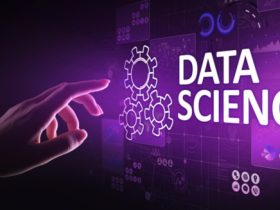Machine learning is an application of Artificial intelligence. It is a set of algorithms which use data to learn and take decisions without requiring specific programming. Machine learning algorithms analyze data to find relationships between different variables, which helps the machines to predict outcomes. Machine learning can identify patterns in data and use this information to apply the patterns to new data.
Although Machine learning has been around since 1959, it has gained huge popularity in recent times. Machine learning algorithms require a large amount of data to analyze and learn from. Data, as well as the storage and computational capacity required to analyze the data, is readily available now. This allows machine learning to advance rapidly.
See also : What is Artificial Intelligence (AI )?
Types of machine learning are:
- Supervised learning
Trained people like data scientists create labelled data as examples for the algorithm. These examples contain inputs and desired output. Using these examples, the algorithm learns the logic used to convert the inputs to the output. It can also verify its output against the desired output and make changes in the logic as needed. Once the algorithm is trained with a large set of labelled data, it can predict the output for any new input data. Supervised learning can be used for Speech recognition applications.
- Unsupervised learning
Unstructured (unlabelled) data is provided to the algorithm, which scans the data to look for patterns. The desired output is not provided to the algorithm even during training. So, unsupervised learning cannot predict outputs but it can categorize data and make it easier to understand by finding relationships among different data. This type of learning requires a massive amount of data which is easily available nowadays. Unsupervised learning is helpful when enough resources (skill or money) are not available to first label the data. Recommendations on shopping sites use unsupervised learning to categorize people with similar shopping habits. They can then show the products purchased by similar users.
- Semi-supervised learning
In semi-supervised learning, most of the data is unlabelled but a smaller set of data is labelled. A mix of supervised and unsupervised learning is used by the algorithm. The algorithm can look for patterns in the unlabelled data and use the labelled data as a guide for more accurate results. This learning method is useful when labelling large amounts of data is very resource-intensive. This method can potentially be used everywhere that supervised learning is used. An example of semi-supervised learning is the categorization of web pages. Categories of web pages can be suggested to the algorithm using labelled webpage samples. The algorithm can look for patterns in the unlabelled web pages and categorize them and even find new categories.
- Reinforcement learning
In reinforcement learning, the algorithm or the machine interacts with its environment by taking actions. Each action receives a reward. The goal of the machine is to maximize the rewards. By doing this, the machine learns the best or ideal actions to take in different situations. Commonly used example of reinforcement learning is gaming. While playing a game like chess against a computer as a second player, the computer uses reinforcement learning to learn the best moves to use at different stages and situations in the game. Just like humans, the computer gets better at playing with practice.
Data is the basis of learning using these machine learning techniques. Acquiring proper data for training the machines is crucial for machine learning. Machine learning is commonly implemented in a majority of Artificial Intelligence applications.
See also : Enterprise IoT (Internet of Things)
check out our IoTDunia Youtube Channel and explore more on iotdunia.com.
References:
https://www.sas.com/en_in/insights/analytics/machine-learning.html
https://www.expertsystem.com/machine-learning-definition/
http://dataconomy.com/2014/06/understanding-big-data-machine-learning/










1 Review